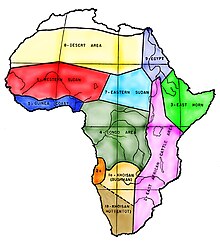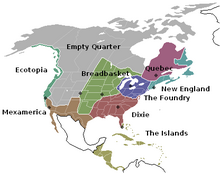This article needs additional citations for verification. (March 2023) |
From top, clockwise: Africa, Circum-Mediterranean, East Eurasia, South America, North America and Insular-Pacific cultural areas in the Standard cross-cultural sample






In anthropology and geography, a cultural area, cultural region, cultural sphere, or culture area refers to a geography with one relatively homogeneous human activity or complex of activities (culture). Such activities are often associated with an ethnolinguistic group and with the territory it inhabits. Specific cultures often do not limit their geographic coverage to the borders of a nation state, or to smaller subdivisions of a state.[1][2]
- ^ "Culture area | Anthropological Definition & Characteristics | Britannica". www.britannica.com. Retrieved 25 July 2023.
- ^ "Space and Society: Cultural Regions".





